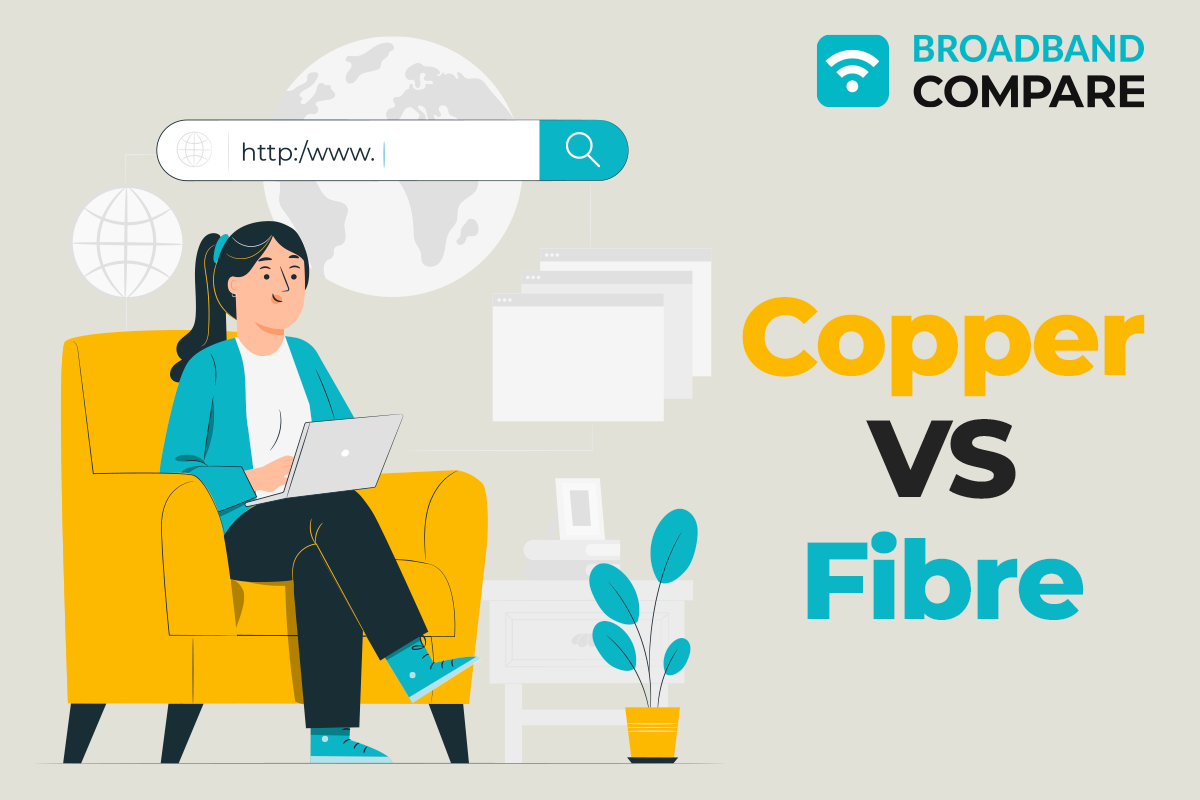
Broadband technologies and infrastructure have been continuously developing over the years. Scientists and engineers are always on the hunt for the next most efficient and better performing discoveries. New Zealand has several broadband type options across the country. Copper and fibre tend to be the types most commonly discussed and available to Kiwi households. But with all the jargon out there, it can be hard to know the difference between the two, and which is best for your unique needs.
Let’s dive into the differences between copper and fibre broadband and the benefits of this futuristic development in broadband!
Copper is the original broadband network in New Zealand. Its widespread infrastructure was initially installed throughout the country for voice calls. Copper cabling networks are built from copper wiring and use electricity to transmit data.
Meanwhile, fibre continues to rapidly replace copper networks, becoming more popular throughout regions and suburbs. Copper will soon be a thing of the past, and you’ll find that many providers have already withdrawn this option. Why? Fibre is simply faster! Much faster. Fibre is the future. This internationally renowned technological development is made up of hundreds of tiny strands of glass fibre, which uses the power and speed of light to transmit data. Since light is faster than electricity, fibre is capable of transmitting information at a much faster and efficient rate.
While copper wiring is the most widespread network, it does come with its limitations as technologies outgrow its abilities. For example, it can struggle to transmit data across multiple devices. For households, this means that if there are several people streaming, gaming, and completing homework assignments at the same time, the copper wiring can become stressed and you’ll experience slower download and upload speeds.
Luckily, Fibre is reaching more and more homes throughout New Zealand. Soon everyone will be able to wave goodbye to pesky buffering and lagging. How good is that? Fibre is capable of a much higher bandwidth, meaning that you seamlessly use multiple devices to watch, listen, play, post, work and video chat all at the same time. And you won’t experience any buffering or disruptions in quality. Fibre cable wires are as thin as a human hair, but they can carry data over great distances and they provide equal upload and download speeds, so you can get on with all the tasks you need to do without delay.
Copper wiring does work well in that it can deliver information to devices without having to lay down additional cables. However, it doesn’t do as well in the face of the elements and this is one of the reasons why fibre was initially developed. Copper can degrade over time due to environmental factors.
Fibre cables are a lot more durable against storms and temperature changes. Did you know that fibre can also be submerged in water? There is currently an enormous fibre cable across the Atlantic Ocean, connecting the U.S. with Europe and beyond. How cool is that?
Copper was truly groundbreaking in the way that we have used and diversified the digital world. It has served us well and truly forged the path for the 21st Century. But it’s now time to make way for new developments that match the demands of our changing lives. Fibre optic cables are the way of the future for Aotearoa and the world. As more communities gain access to this incredible technology, costs will reduce and it will become the most sustainable and financially-beneficial broadband network in the long term. It is simply better. Faster, more capable, durable, reliable. Isn’t that a necessity for staying connected in 2024?
Or, if you don’t have the time to jump on the website, or you’d prefer to speak with a friendly person, our customer service support team is based in Auckland, and free to use.